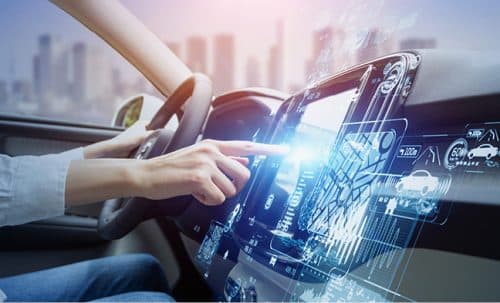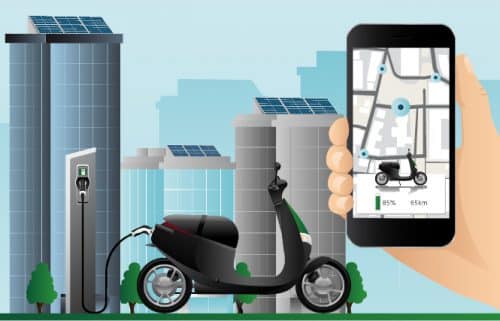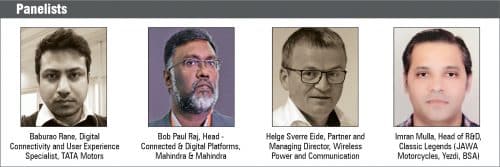Smart vehicle technology has changed the way we look at mobility and has taken the world by storm. How can India jump onto the bandwagon? Do we have a smarter role to play? Here are some expert opinions on the challenges faced in the adoption of connected mobility in India, and how we can tackle them.

India is one of the most populated countries in the world where the resources are bound to deplete. So, the adoption of electric vehicles (EVs) and connected mobility is something that can go a long way. However, despite the purported benefits of adopting electric mobility, we sorely lack behind.
According to Baburao Rane, digital connectivity and user experience specialist at TATA Motors, UK, the journey of connectivity has just started in India. While countries like the US began adopting EVs in the early 2000s, India has seen it coming into the picture only two-three years ago.
Imran Mulla, head of R&D at Classic Legends (JAWA Motorcycles, Yezdi, BSA), elaborates on the term connected mobility. He says, humans have always had the need to travel, and thus the need for the mode of travel and its accessibility. This accessibility has always been a concern, especially in a country like India. Today, in the era of digital transformation, we heavily rely on a digital ecosystem. “It is the mobile phone that has actually opened the gateway for connectivity,” he says.

The onset of the pandemic played a crucial role in quicker adoption and fast-paced development of the EVs and connected mobility. Bob Paul Raj, Head – Connected & Digital Platforms, Mahindra & Mahindra, opines, “The rapid adoption of digital platforms and initiatives, especially during the onset of the pandemic, has exponentially grown, and some key components or growth areas in digital era include process optimisation, better engagement with customers, and thriving new business models. And connected platform is a key milestone on this digital journey for an OEM.” Bob believes that all this machine data integrating with context provides value to the entire ecosystem and visibility to the entire business value chain, keeping in mind the growing technology together is what connected mobility means.
Connected mobility for an electric future
The electric vehicle industry in India is growing by leaps and bounds, and the government has taken various steps to promote electric mobility in the country. Despite that, there is still hesitation among vehicle owners to shift to electric mobility.
The reasons for this hesitation are many, including lack of charging infrastructure, higher cost of EVs, and range anxiety. Now, with the introduction of connected mobility, Imran believes that it can provide the EV industry a significant boost such that it gains an edge over other forms of mobility. OEMs are now focusing on making EVs accessible to a larger audience by removing some barriers.
For greater convenience to customers, Imran suggests that an integrated way of transportation has to be taken where safety and user experience are the primary focus areas. He adds, there are multiple fronts to implement this integration, but simply said, it has to be intelligent, integrated, and safe, and with a strong carbon footprint which we are all working towards.
With these fast changes with respect to connectivity, OEMs also need to adapt as it is very new for them. Rane says, “It is difficult for older automotive players to understand how this system works.” This is because everything from data transfer to analysis of data works at a very fast rate. The best approach has to be analysed to create and maintain such integration. Further, connectivity brings challenges in terms of backend infrastructure, which needs to be designed and maintained. Maintenance of such sophisticated backend infrastructure is a recurring cost. Will OEMs bear this cost, or will end users bear this cost?
All these questions need to be addressed keeping convenience of the consumers in mind.
Connectivity in E2Ws
The rapidly growing number of electric two-wheelers (E2Ws) has taken the market by storm and these are on the way to become IoT devices on wheels. There have been various advancements in battery technologies and power devices, which has enabled the development of a connected space.
OEMs are trying to integrate features like satellite based positioning receiver, cellular modem for cloud connectivity, and a short-range Bluetooth or Wi-Fi link for local tasks. This connectivity enhances user experience and safety, making the overall solution adoptable. “Today, having a small hardware that talks to a CAN is an easy way of making the motorcycle connected,” Imran says.
With this connectivity, users will have access to real-time information about their motorcycle, like its geolocation, traffic data nearby, etc. There is a focus on implementing advanced warning systems or early warning systems where a particular congestion on the road is notified much earlier. Another aspect is how personal information like the geoposition of the user is shared among other users for more responsiveness. All of these are the challenges that are being worked upon.
“But to begin with, it is more about providing the convenience and ease to a rider by having diagnostics available which are real-time,” he concludes.
Connectivity in agriculture
Connectivity plays a major role in almost every sector by providing the capability to transfer data between the sensors, computers/processors, and the end users. The agricultural sector can also leverage this connected approach, says Bob.
According to Bob, connectivity applies to every stage of farming. There are dedicated tools and algorithms for each stage in farming. Precision agriculture methods are constantly trying to increase crop yields and profitability while lowering the levels of traditional inputs needed to grow crops. An example of precision farming is spraying pesticides in the affected areas with the help of drones. Here, drones are utilised to scan the field and identify pest affected areas using image processing techniques. Once the areas are identified, pesticides can be sprayed on those areas. With precision farming, time is saved, yield is maintained, cost of the pesticides reduces, and the overall productivity increases, thus helping us achieve economies of scale.
Bob adds, connectivity must be adaptable to all kinds of machinery. Decisions must be made by OEMs on how much data needs to be on cloud, and how much should be processed on the edge. Once we have access to all the data collected, meaningful insights can be generated. He says, “In agriculture, we have people who do processing of agri-inputs using the data like quantity of produce, delivery data, and quality of produce.”
Additionally, ensuring a secure way for this data to transfer across different systems, not only on the cloud level but also within the system itself, is also essential.
Need for a connected approach
Adoption of a new technology in any industry relies most importantly on collaborations. The data harvested from sensors provides a lot of insights to the users and OEM. Rane thinks that the next big challenge to all the OEMs will be trying to see how to monetise this data, possibly with partners who are interested in this data for improving technologies even further.
The challenges encountered by all OEMs will more or less be the same, so there can be a common neutral platform where data can be shared and then allow third parties or startups to engage. This, he believes, will be a good way for this ecosystem to accelerate much faster.
Helge Sverre Eide, Partner and Managing Director, Wireless Power and Communication, adds, “I think it’s a global opportunity for growth and it’s a big opportunity to move things into a safer and more sustainable position. We need to agree on the data format, and we need to be able to manage the cyber security aspects and the individual person’s privacy. In doing that, cooperation is critical.”
Greater data needs greater security
Earlier, the vehicle data passed through the CAN networks inside the closed ecosystem of the vehicle. The journey for connected mobility has just begun, and basic telemetry features are already being implemented like basic track and trace. But with the increasing demand for connected mobility, data has to be exposed to an open cloud, and in such events there is always a possibility of theft of data, data manipulation and hacking.
Rane says, “Cybersecurity would be a key element. Because earlier it was a closed loop. Data was coming in, and was getting stored inside the vehicle itself, without any external interference. But now it is being exposed to an open network. And without proper security, anyone can hack or maneuver the data, causing serious accidents.”
There are various smart devices from different vendors integrated inside an electric vehicle. According to Rane, the privacy of data is compromised when third-party services get involved and expect some data from the vehicles.
Eide warns that if a sub-vendor wants to access the data from a particular part of the vehicle, it is important that other data remains unaffected and protected, for which segregation of data is necessary.

The road ahead
The idea of connected mobility has gained much traction in the past couple of years but there is still minimal innovation and development in the field.
Imran believes this is because we are currently in the second stage of evolution. The first stage was to understand the challenges associated with this space and entering the space. He believes that the journey from here is going to be pretty quick.
In the last couple of years, each OEM has put specific focus on technologies, starting off with EVs, engine control units’ advancements, and finally touched connected mobility.
Imran says, “The journey we have done so far primarily involves growth in each of these areas. In the next five years or so, we will witness a very high growth as far as each of these areas is concerned. India has got the capacity and capability in terms of skill set. The intent is much clearer now, and the vision and the path has largely been made clear as well.”
The article is an extract from a panel discussion at the MOVES 2021.
Darshil Patel is a technology journalist at EFY







